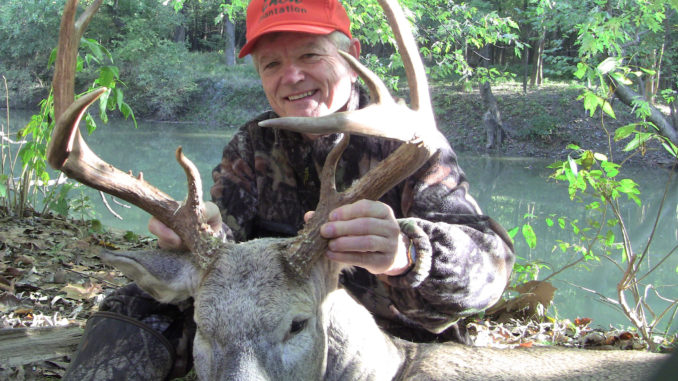
Steve Cobb, a Hunter Specialties pro staffer from Union, S.C., said that the specific manner of grunts and bleats hinges on where he’s hunting. In the Carolinas, it’s the soft and subtle sounds that produce the most reaction from deer.
“In the Carolinas, I stay soft and subtle and mimic sounds I hear our deer make,” he said. “I refer to these sounds as tending grunts and just soft bleats.”
Cobb said he will use a series of three calls, all short, subtle grunts, when calling blind. He will pause and repeat the set of three, pause and repeat again. Then, he waits and watches for activity. After 15 minutes he’ll run the process gain.
Marshall Collette, a Quaker Boy pro staffer from Greensboro, N.C., uses the same soft grunts, sometimes up to five in a series, but he often relies on bleats.
“I use a Quaker Boy bleat can and simply roll it, wait a couple seconds and repeat and continue four or five times when calling blind,” he said. “I cup my fingers in different positions over the holes to produce different sounds, as if the deer is looking up, down or turning his head. It adds to realism, a key component to these calls. Turkey hunters can make this analogy and it’s just as important for deer calling.”
Willie McCutchen, an expert bowhunter from the South Carolina Lowcountry, said he typically uses the three-grunt series and prefers to wait until he sees a deer before grunting.
“When I see a buck, I’ll grunt and often follow it with a bleat or two,” he said. “This combination seems to be most effective for me. The grunts often get the buck’s attention, and the bleat seals the deal; they move in to investigate. I let the action of the deer dictate if I call again or not. If he’s coming in, I just let him come at that point.”
Cobb said these soft, subtle calls are often underestimated by hunters, because deer can hear them at ranges of 150 yards or more. That’s a 300-yard circle with you in the center and that’s good coverage.
“The nose, ears and eyes are a deer’s survival modes, in that order,” he said. “They can hear well and will often slip in to natural sounds of other deer. But you’ve got to hold movement to a minimum, unless you see the deer and know you can move when he’s not looking. If hunters want to employ vocalization successfully, in addition to making the right sounds, wind is a crucial consideration to success. Play the wind if you want to see that big buck.”




Be the first to comment